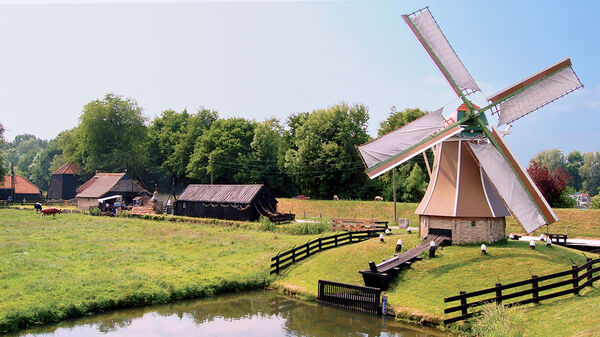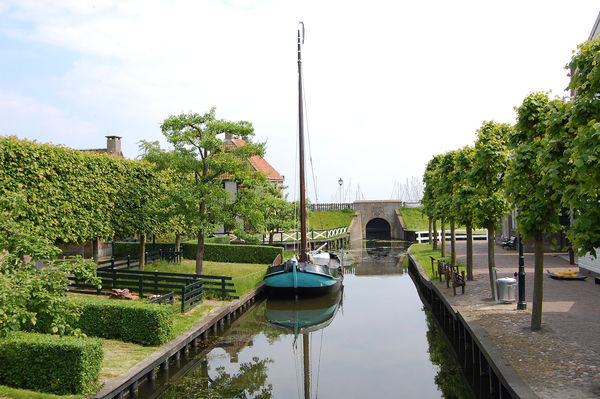Going Dutch...in Holland’s Polder Country
By Rick Steves

Today my long-time Dutch friends, Hans and Marjet, are driving me to polder country — the vast fields reclaimed from the sea where cows graze, tiny canals function as fences, and only church spires and windmills interrupt the horizon.
Hans is behind the wheel. He injects personality-plus in all he does, whether running a B&B or leading tours for Americans. And bouncy Marjet, with a head of wispy strawberry-blonde hair, red tennis shoes, and a knack for assembling a Salvation Army–chic outfit for under $20, is the sentimental half of this team.
On each of my visits, they show me a new slice of Holland. With each visit with Hans and Marjet, I renew my belief that the more you know about Europe, the more you'll uncover what's worth exploring.
Hans catches me referring to his country as "Holland" and complains that many Americans call the entire country "Holland" when Holland actually comprises of just two of the 12 provinces that make up the Netherlands. But in defense of those confused Americans, I remind him that most of our iconic images of the Netherlands come from the region properly referred to as Holland.
The word "Netherlands" means "lowlands." The country occupies the low-lying delta near the mouth of three of Europe's large rivers, including the Rhine. In medieval times, inhabitants built a system of earthen dikes to protect their land from flooding caused by tides and storm surges. The fictional story of the little Dutch boy who saves the country — by sticking his finger in a leaking dike — summed up the country's precarious situation. (Many Americans know this story from a popular 19th-century novel, but Hans says few Dutch people have ever heard of it.) In 1953, severe floods breached the old dikes, killing 1,800 and requiring a major overhaul of the system.
We talk about all this while we are motoring into the country. It's amazing that about 10 minutes from Amsterdam or Haarlem, you can be in the wide-open polder land. It's early summer, and the landscape is streaked with yellow and orange tulip fields.
This area, once a merciless sea, is now dotted with tranquil towns. Many of the residents here are older than the land they live on, which was reclaimed in the 1960s. Hans points out a quaint windmill along a dreamy canal. Old-time windmills like this one were used to pump the flooded marshlands dry. (The windmills later served a second purpose for farmers by turning stone wheels to grind their grain.) Once the conquerors of the sea, these windmills are now relics, decorating the land like medallions on a war vet's chest.
We move on, driving past sprawling flower mogul mansions. The Renaissance-era Dutch grew rich off trade, including the once-booming market for the tulips and other flowers that grow well in the sandy soil near dunes. The tiny road leads through desolate dunes, then dwindles to a trailhead. Hans parks the car, and we hike to a peaceful stretch of North Sea beach. Pointing a stick of driftwood at a huge seagoing tanker, Hans says, "That ship's going to the big port at Rotterdam. We're clever at trade. We have to be. We're a small country."
Holland welcomes the world's business, but Holland is not designed for big-shots. Hans explains, "Being ordinary is being prudent. We say, a plant that grows above the grains gets its head cut off. Even our former queen prefers to do her own shopping."
While Hans and I talk, Marjet walks ahead of us, collecting shells with the wide-eyed wonder of a 10-year-old. "Cheap souvenirs," Hans teases. One stereotype the Dutch don't dispute is their frugality. Hans quizzes me: "Who invented copper wire? Two Dutch boys fighting over a penny." But considering their skill at birthing an economic and cultural powerhouse from scraps of marshland, it's clear that the frugal Dutch are, at heart, admirably pragmatic.

